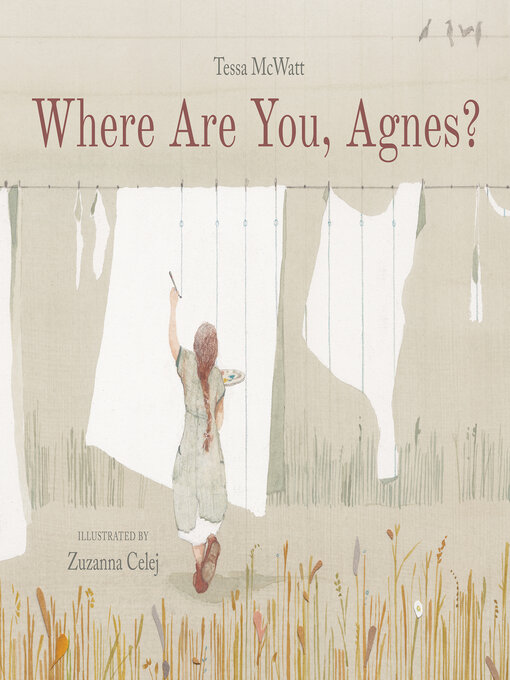This stunning picture-book imagining of artist Agnes Martin's childhood gives readers a glimpse into the life and work of one of the most esteemed abstract painters of the twentieth century.
Agnes Martin was born on the Canadian prairies in the early twentieth century. In this imagining of her childhood from acclaimed author Tessa McWatt, Agnes spends her days surrounded by wheat fields, where her grandfather encourages her to draw what she sees and feels around her: the straight horizon, the feeling of the sun, the movement of birds' wings and the shapes she sees in the wheat.
One day, Agnes's family moves to a house in a big city. The straight horizon and wheat fields are gone, but Agnes continues to draw what she sees and feels around her. No one except her grandfather understands what she is trying to capture — not her mother, who asks, "Where are you, Agnes?" when she sees her daughter engrossed in her drawing; nor her siblings, who think her art is ugly. Still, Agnes keeps trying to capture what she sees inside her mind.
Agnes Martin grew up to become a famous abstract expressionist artist. Tessa McWatt has written a beautiful story of Agnes's childhood and how it might have shaped her adult work. Zuzanna Celej's watercolors adeptly capture Agnes's world, including hints of the grid paintings that she was later known for, against the backdrop of prairie and city landscapes.
Includes an author's note with more information about Agnes Martin's life and the inspiration behind this story.
Key Text Features
author's note
art history
Correlates to the Common Core State Standards in English Language Arts:
CCSS.ELA-LITERACY.RL.2.7
Use information gained from the illustrations and words in a print or digital text to demonstrate understanding of its characters, setting, or plot.


